sixtdaily
Well-Known Member
- Joined
- Apr 23, 2016
- Messages
- 8,777
- Reaction score
- 1,057
Live Streaming... The S/S 2026 Fashion Shows
This Wednesday sees the release of Drew Jarrett’s Guinevere – a photo book celebrating the iconic model of the same name, Guinevere Van Seenus. Designed by Dean Langley and published by IDEA, the latter says, “There are few models of the past twenty years more deserving of a single subject photo book.”
The American fashion model and make-up artist began modelling as a teenager but quickly found fame after working with the legendary Mario Testino in 1995. A year later she landed her first cover with W.
In her two-decade career, Guinevere has graced the catwalks of Prada, Chanel, Versace, to name a few, and been lensed by everyone from Patrick Demarchelier, Paolo Roversi, and Inez & Vinoodh, amongst many others. She's long been a fixture on the pages and covers of Dazed as well as AnOther, and has also appeared on film – notably in Todd Cole's collaboration with Rodarte for the SS13 techno-thriller This Must Be the Only Fantasy.
On Jarrett’s pages, the 39-year-old model returns as we rarely see her – eschewing fashion and studio lights for sun and lakes in an uncompromising display of unwavering beauty.“Guinevere, as we all know, has been a muse to many. She is always amazing to collaborate with, and is more beautiful than ever as a woman and not a young girl. She takes her work seriously and gives her all,” explains Jarrett. “We spent time upstate (New York) at a friend's house that I frequent and found spots that I love in the house and around the woods and lakes. Technically I've kept the imagery simple and honest. I'm always influenced by finding the right light, colours, and feeling, coupled here with catching special posed moments while still keeping them raw and real. In the end, we had so many strong shots, too many that I loved, and thought they were even more compelling and beautiful as a larger story altogether laid out with Dean Langley and published with IDEA LTD.”
Fans of Jarrett’s work can also look forward to a second book out in September, which will be a compendium of his photography from the 90s.
Guinevere launches at Mast Books, New York, this Wednesday 14 June 2017. Jarrett will be signing copies from 7-9pm. Books will also be available online from Thursday 15 June 2017.









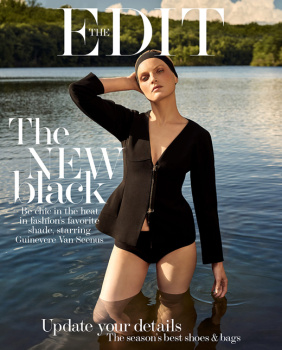

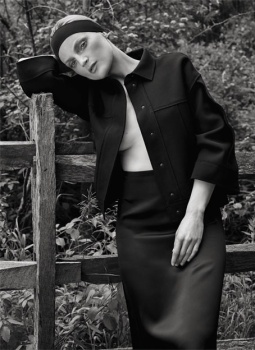
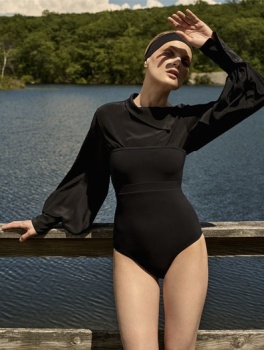
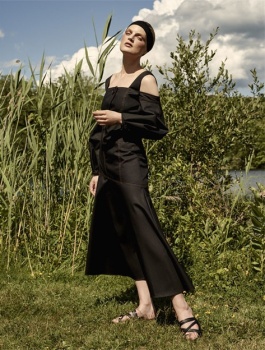

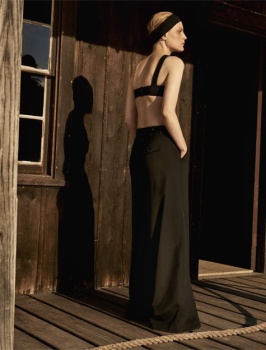
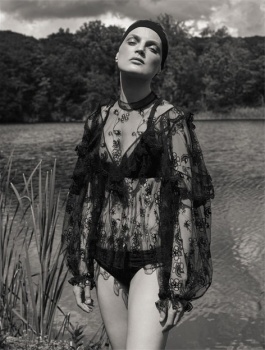


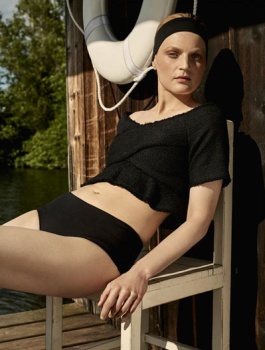
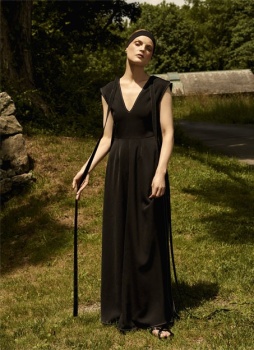
net-a-porterHaving struggled with anxiety, model Guinevere Van Seenus knows what a tough business fashion can be – but she also knows it to be one of strength and compassion. She talks to Emma Sells about celebrating women and staying true to herself.
Back in March, American model Guinevere Van Seenus found herself at the heart of one of the most talked about and impactful moments of the season. Cast alongside a multi-generational line-up of incredible women including Kirsten Owen, Julia Nobis, Emma Balfour and Mica Argañaraz, she took to the runway for Dries Van Noten’s 100th show in Paris. “I was one of the first models out and then we were lined up at the back for the rest of the show,” says Van Seenus. “We never get to watch a show, but I got to see all these awesome women that I’ve known for so long, and some of them I hadn’t seen for almost 15 or 20 years, so watching them walk was just like... I mean, it sounds silly to say that it was a spiritual experience, but I really felt it in my heart, how wonderful [the show] was for women.”
Van Seenus has flown into London briefly for a shoot, and tonight she’ll head back to New York, currently her home. At 39 – not that she looks anywhere near it in the flesh or in front of the camera – she’s still racking up air miles, as in demand as she has ever been, and hoping that the current mood for casting an eclectic mix of models on the runway is more than just a trend. “That’s how it was when I started,” she tells me in a quiet corner of a Soho hotel. “Not that there was a broad age range, but there was a lot of variety – it was actually a detriment if two girls looked remotely alike. And then it went to everybody looking like they’re from the same gene pool. I like it more when, if you’re an amazing woman, you’re an amazing woman. The rest of it is irrelevant; they’re just parts of you.”
If you haven’t done so already, you should spend some time lost down an internet wormhole of Van Seenus’ pictures, past and present. Whether she’s makeup-free, hair slicked back from her face, or tricked out in couture playing an otherworldly character, she’s arresting and impossibly compelling, all sublime bone structure and penetrating stare. Van Seenus is a photographer’s muse, the antithesis of the Victoria’s Secret crowd, and her Cv reads like a who’s who of fashion’s most influential and game-changing creatives from the past two decades: shoots with Paolo Roversi, Steven Meisel and Irving Penn; campaigns for Jil Sander, Chanel and Prada; and catwalk appearances for, well, everyone. She’s officially an icon, which makes it surprising that she still suffers from the serious case of imposter syndrome that she first experienced aged 17.
“I don’t know that I ever should have made it in this business, you know what I mean?” she explains. “My measurements were never right, I wasn’t commercial and, especially when I started, I was very strange-looking; personality-wise I was a little bit different from girls that are happy in the spotlight. But it’s a reality check; I don’t walk through the world with people assuming that I’m a model, especially because the type of work that I do isn’t in people’s faces. I’ve had many times where I walk on set and people tell me where I can set up my makeup, or assume that I’m the journalist, the stylist, the hairdresser, the photographer... I get [mistaken for] almost everyone except the model.”
Van Seenus was raised in Washington and California by her Dutch parents. She started modeling as a teenager at the suggestion of her mother, fitting in classes that taught her how to walk alongside high school and sports. She planned to go to art school and play basketball, but instead found herself being booked with increasing regularity, racking up campaigns and covers. Then, a few years into her career, she took time out, finding it too hard to deal with the knockbacks and body scrutiny that goes hand-in-hand with the job. “I left because I absolutely couldn’t handle it,” she says. “I was having panic attacks and anxiety; it was overwhelming.”
It was photographers such as Paolo Roversi, who kept calling her to check in, that persuaded her to return to the business. “I realized there are actually so many genuine, very giving, very kind people around,” says the model. “It’s not as superficial a business as people think it is. That was quite an awakening for me. When I was young I had this idea that the minute you’re not hot, none of these people are going to talk to you again. So once I walked through that and realized that was not the reality, I became a bit more comfortable with not having to be perfect for everybody.”
All of which is not to say that Van Seenus doesn’t have a single-minded streak. She’s crafted her career in a way that suits her, picking and choosing jobs even at a stage when most young models would have done whatever they were told.
“I was always that way,” she laughs. “I mean, I think if you talk to any of my agents along the way, they would say, ‘Guinevere had an opinion and she was quite stubborn at times – or most of the time.’”
Creative to the core, it’s the boundary-pushing, truly collaborative shoots that set Van Seenus’ world on fire, and she considers herself lucky to have started out in the ’90s, in an era of Polaroids, streamlined teams and no social media. “I don’t think that I’d be able to navigate [the industry] or do it the way the girls do it today. I don’t think it’s in my personality,” says the model. “I can try, but I’m always going to revert back to being pretty quiet and not wanting to share everything about myself, wanting to connect with people very personally. But I appreciate it; I see how great it is for people and how good people are at it.”
Van Seenus deals with the ever-increasing pace of the industry by using her hands: she’s recently rediscovered basketball in New York’s glut of public courts, and heads down with her rescue dog, Ashley, when she can. “It’s one of those things that you lose when you first get into modeling,” she says. “You just kind of forget to continue those things that keep you happy. But living in Brooklyn, it’s really easy. It’s my playtime; there’s a focus, your mind gets quiet. It’s just really nice for the brain.” She’s a prolific artist, too, taking photographs, painting and making jewelry in a small studio in her apartment, or on her travels. She’s gently crafting a back-up plan for if the calls stop coming, keeping her creative options open and considering a move behind the camera or expanding her jewelry line, Jacoba. But for now, there’s really no need.
“I thought it would have happened about 10 years ago or more,” she admits. “But I have friends who tell me that they hope I never stop working and they are very passionate about certain women. I think I would feel the same if Kristen McMenamy never took another picture, or if Stella Tennant never took another picture, because they’re just so beautiful at every age. And I think it’s such a wonderful thing to say to women, ‘Keep going,’ you know? Keep going.” Here’s hoping she does exactly that.

